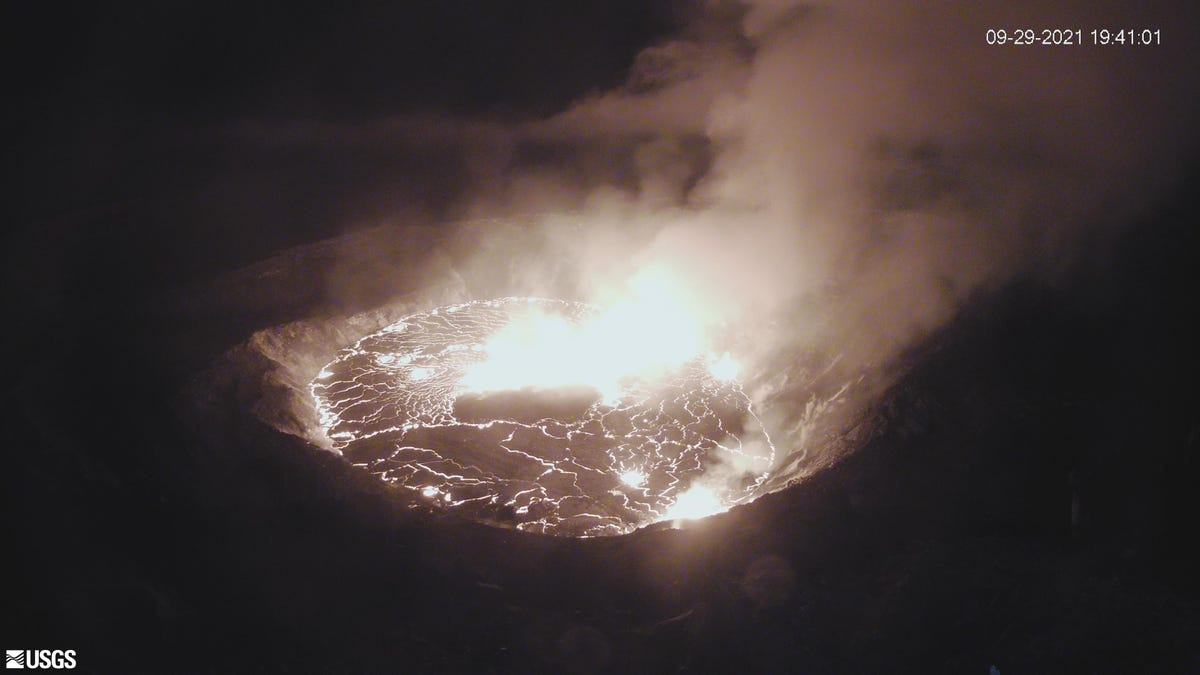Hawaii's Kilauea volcano erupts, lava fountains spew 75 feet into the sky
The alert level has been raised to "warning," and hazards are being constantly assessed.

The view of lava within Halemaumau, a crater inside Kilauea's caldera.
The youngest and most active volcano on Hawaii's Big Island, Kilauea, has begun to erupt. According to the US Geological Survey, the eruption began at around 6:20 p.m. PT (3:20 p.m. local time) when a glow was detected in the Halemaumau crater, which sits within Kilauea. The eruption is currently confined to the crater, within the Hawaii Volcanoes National Park. It is being monitored by scientists with the USGS Hawaii Volcano Observatory.
The HVO has updated the alert level from "watch" to "warning," signalling that a "hazardous eruption is imminent, underway, or suspected."
Halemaumau is a pit crater, caused by the collapse of the surface, it's located within Kilauea's caldera. The caldera is formed when a volcano erupts, emptying its magma chamber onto the Earth and making the surface unstable. Eventually, all ground falls inward, and you get a huge depression in the surface of the Earth.
Lava fountains reach height of a 5-story building as #KilaueaErupts. Beginning Sep 29, lava fountains appeared on surface of the lava lake within Halema‘uma‘u crater. Video shows dominant fountain south of the lake center. Stay informed, track conditions: https://t.co/KnJNFVUVM7 pic.twitter.com/us0iVjqizx
— USGS Volcanoes🌋 (@USGSVolcanoes) September 30, 2021
For much of 2019, Halemaumau was filled with water -- it had become a lake. But an eruption in December 2020 saw vents feed in lava, boiling off the water and creating a "lava lake" that was around 750 feet deep. It persisted until around May 2021 when the lake crusted over -- but it's active again.
According to the USGS, new fissures have opened up on the surface of the lava lake. The agency states that "high levels of volcanic gas are the primary hazard of concern, as this hazard can have far-reaching effects down-wind."
The USGS and National Parks Service have live views of the pit crater and lava lake if you're keen to see the latest images. You can also stay up to date with the most recent alerts via the USGS updates page.

